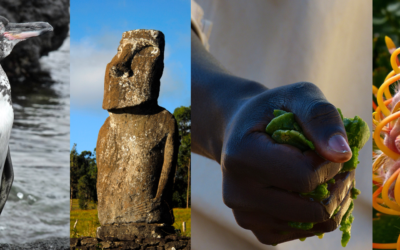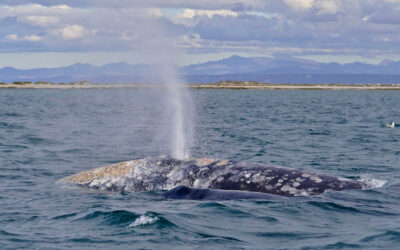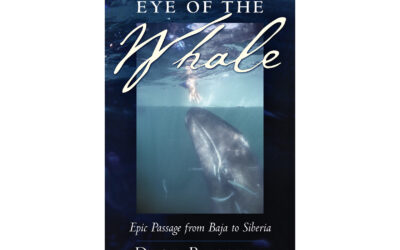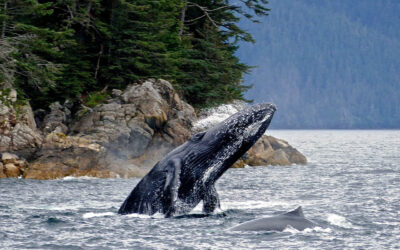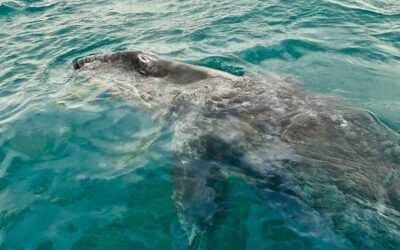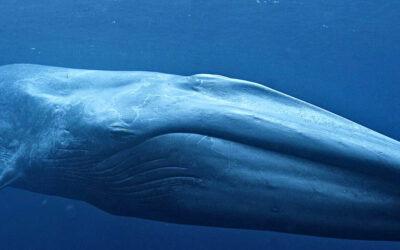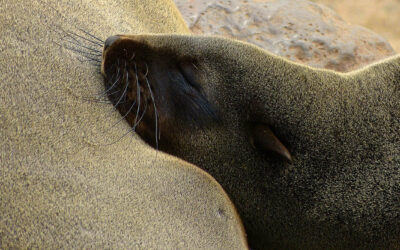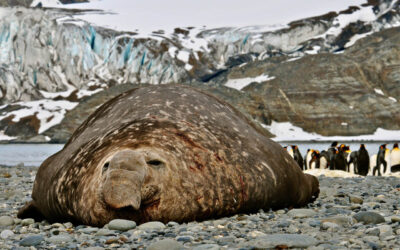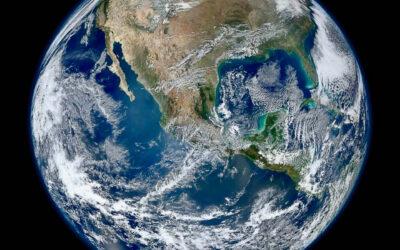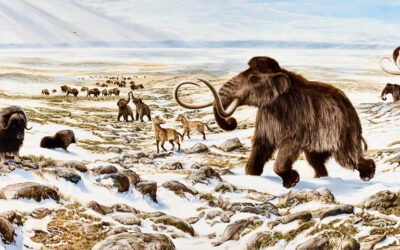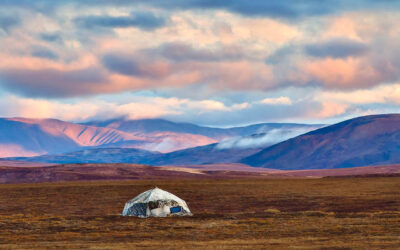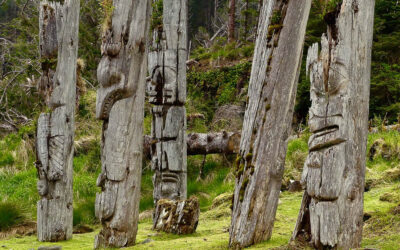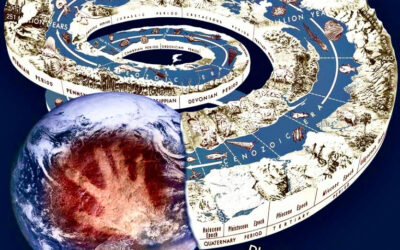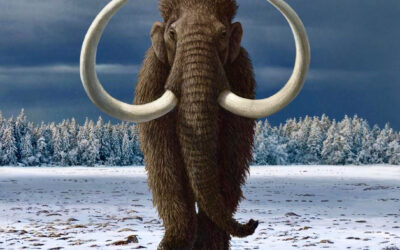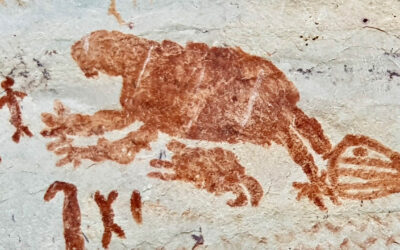To view the full content of each post, please click on the title, featured photo or on “read more” after the post intro.
For a list of all posts without images and preview text, click here. Thank you!
ePostcards – Intro
Greetings, I launched our Cloud Ridge ePostcard Blog in late March of 2020, as the unfolding tragedy of the COVID-19 pandemic encircled the globe in a shroud of sadness. With the help of our skilled webmaster, Clyde Lovett, I wanted to provide a respite from the daily...
ePostcard #168: There She Blows!
In early December of 1846, the American whaler Hibernia, with Captain Smith at the helm, sought a safe anchorage beyond the reach of a fierce winter storm and sailed into the entrance of Bahía Magdalena along the west coast of the Baja Peninsula. The bay was exactly as described in the ship’s logs from previous voyages.
ePostcard #167: A Naturalist’s Bookshelf (Eye of the Whale)
Once you look—really look—into the eye of a whale you never forget the experience. The connection is profound and, for some, life changing. As a naturalist guide for the past four decades, I’ve been gifted with many extraordinary encounters with whales. Do I have a favorite whale species? This is an impossible question because whatever whale honors you with a glimpse of its life is certain to breach your consciousness in ways you might never imagine.
ePostcard #166: Ocean Sleepers
Trying to understand—fathoming—the lives of cetaceans (whales, dophins and porpoises) deepens our connection with the natural world. Their remarkable physiological and behavioral adaptations continue to amaze and challenge scientists who endeavor to resolve the myriad questions that arise concerning cetacean survival …
ePostcard #165: Eavesdropping on the Brain: Whales, Dolphins and Porpoises
The Cetacea—whales, dolphins and porpoises—are obligate water dwellers and must make a conscious effort to surface and breathe. How do cetaceans manage to get any sleep in the water or while swimming?
ePostcard #164: Eavesdropping on Blue Whales
Blue whales are the largest animals ever to live on our planet. Adults are up to 110 feet in length and weigh up to 330,000. They feed almost exclusively on krill, straining huge volumes of ocean water through their baleen plates (which hang from the roof of the mouth and work like a sieve).
ePostcard#163: Eavesdropping on the Brain: Marine Mammals
All mammals and birds sleep, benefiting in profound ways from restorative sleep adaptations that support energy conservation, physiological processes, metabolism, immune functions, memory, and learning. This series of ePostcards focuses on adaptive sleep behaviors in marine mammals and birds, with special emphasis on long distance migrants in both groups
ePostcard #162 Sleep Matters!
We are all guilty of sacrificing a few hours of sleep to finish an exciting project, a good book, or to meet work deadlines. Quoting from neurosurgeon Dr. Sanjay Gupta’s recent book—Keep Sharp: Build a Better Brain at Any Age — “Fully two thirds of us who live in the modern, developed world are chronically sleep deprived …
ePostcard #161: Earth-Sun Orbit and Circadian Rhythms
Jet lag is a physiological condition that results from alterations to the human body’s circadian rhythms caused by rapid, long-distance trans-meridian travel (east–west or west–east). Jet lag is most often described as a chrono-biological problem, similar to …
ePostcard #160: Earth’s Journey Around the Sun
Nothing is more important to life on Earth than the Sun. When I think about the annual Earth-Sun orbit that launches the beginning of each new year, I’m fascinated by all the ways in which Earth’s epic voyage around the Sun shapes our lives as well as the biodiverse multitude of …
ePostcard #159: Beringia Revealed
Imagine for a magical Ice Age moment that you are traveling across the vast expanse of Beringia. You have reached the eastern edge of the known world. You are watching woolly mammoths taking advantage of their size and formidable tusks to rout a pride of lions gathered …
ePostcard #158: Voices Across the Tundra
The peopling of the Americas, from the Arctic tundra to the fjords of Tierra del Fuego, remains one of humanity’s greatest achievements, a feat of unparalleled endurance and adaptation to some of the harshest environments on Earth. Braving the unknown, the first Americans and their descendants encountered a diverse array of ecosystems on two continents—the longest geographical expanse ever settled by humans.
ePostcard #157: A Naturalist’s Bookshelf
Whenever I need visual inspiration for writing about the indigenous people of the Pacific Northwest, I turn to my personal library and the hauntingly beautiful images taken by Edward Sherriff Curtis (1868-1952), the legendary American photographer, explorer and …
ePostcard #156: Raven-Walking
According to Haida legend, Raven found himself alone one day on Rose Spit beach, on Haida Gwaii. Suddenly, he saw an extraordinary clamshell at his feet, and protruding from it were a number of small creatures. The Raven coaxed them to leave the shell to join him in his wonderful world. Some were hesitant at first, but eventually, overcome by curiosity, they emerged from the partly open clamshell to become the first Haida.
ePostcard #155: A Voyage to Haida Gwaii
Travel with Cloud Ridge to a remote island world—the beautiful and storm-battered archipelago of Haida Gwaii (formerly the Queen Charlotte Islands)—the ancestral home of the Haida people (pronounced “Hydah”). “Haida Gwaii” means “Islands of the People” in the Haida language. In 2010, in accordance with the historic Haida Gwaii Reconciliation Act, the entire archipelago was renamed …
ePostcard #154: A Naturalist’s Bookshelf
Human activity has fundamentally transformed our planet. We live on every continent and have directly affected at least 83% of the planet’s viable land surface. Our actions have impacted everything from the makeup of ecosystems to the geochemistry of Earth, from the ….
ePostcard #153: Extinction Matters
Ask any child to name an extinct animal, and most will tell you the name of their favorite dinosaur. But if you ask them what the word “extinction” means, and if it is forever, their answers are understandably a bit more confused. Extinction is one of the first scientific concepts that …
ePostcard #152: Humans and Megafauna
Dateline: December 3, 2020. A major discovery at the archeological site of Cerro Azul in the Serranía La Lindosa, Colombia, provides proof that the Amazon rainforest’s earliest inhabitants lived alongside now-extinct Ice Age mammals such as giant sloths and mastodons. The site is located in the Serrania de la Lindosa mountain range in the middle of the Colombian jungle, about 400 kilometers southeast of the capital, Bogota.

